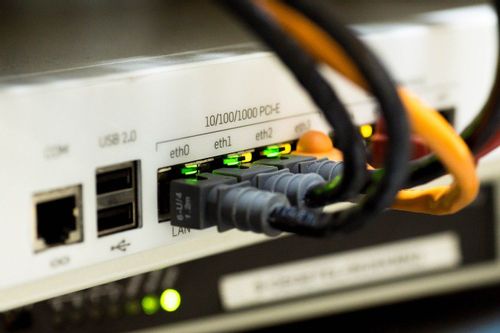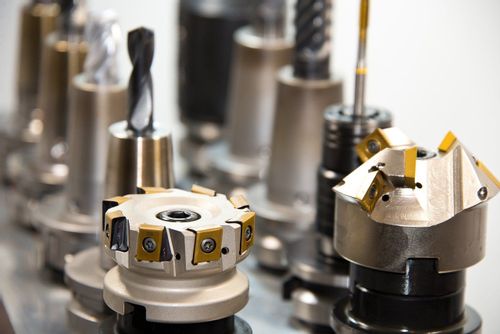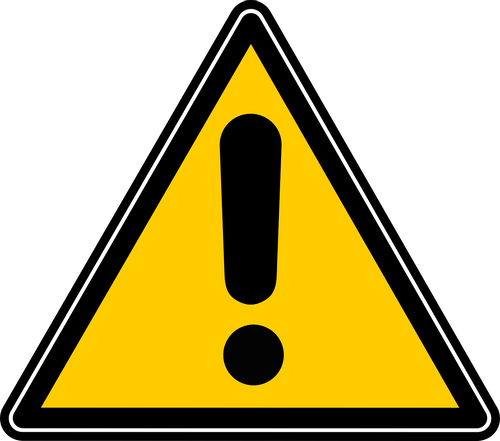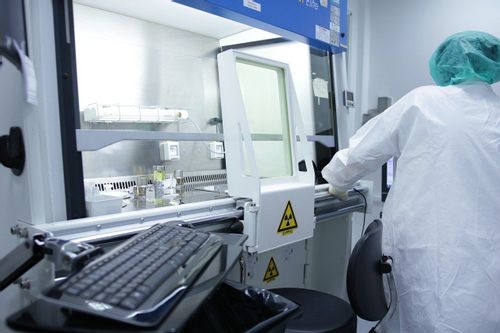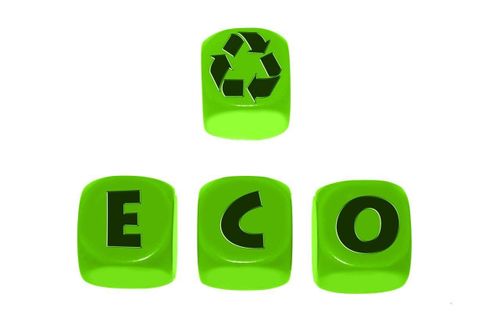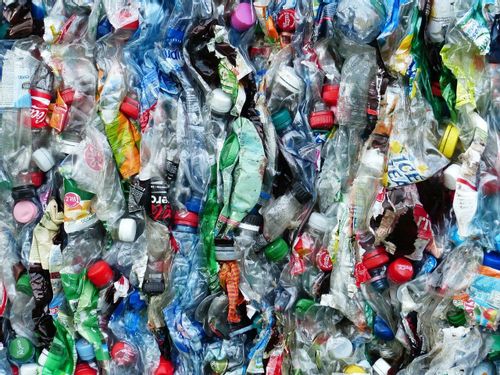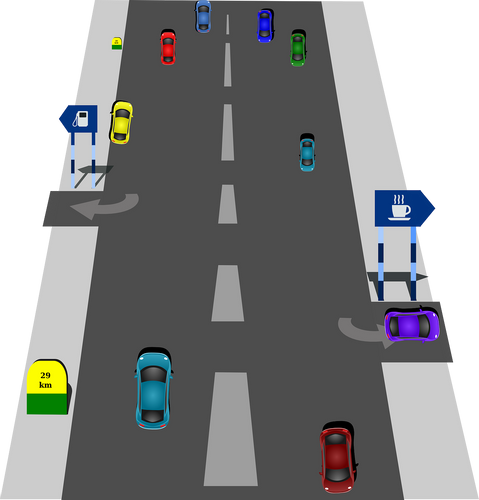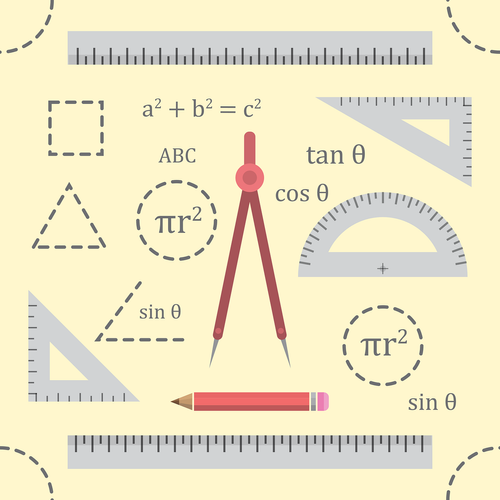Standards Packages
iTeh together with SIST has developed and compiled a comprehensive collection of standard packages to support your standard requirements. Our packages cover an array of content that includes quality management, risk management, road vehicles, machine safety, and much more. With over 200 packages to choose from, you are sure to find a collection to suit your standard needs.
Latest Standards
This document describes the extraction from coal by dilute hydrochloric acid and determination of extractable sodium, potassium, calcium, iron and magnesium.
- Standard8 pagesEnglish languagesale 15% off
- Draft7 pagesEnglish languagesale 15% off
- Draft7 pagesEnglish languagesale 15% off
This document specifies a test method for investigating the oxidative stability of ultra-high-molecular-weight polyethylene (UHMWPE) moulded forms as a function of processing and sterilization method. This document describes a laboratory method for accelerated ageing of specimens taken from UHMWPE moulded forms or forms fabricated from these for use in the manufacture of surgical implants. The specimens are aged at elevated temperature and at elevated oxygen pressure, to accelerate oxidation of the material and thereby allow for the evaluation of its potential long-term chemical and mechanical stability.
- Standard4 pagesEnglish languagesale 15% off
- Draft4 pagesEnglish languagesale 15% off
- Draft4 pagesEnglish languagesale 15% off
This document specifies the test method for assessing the morphology of ultra-high-molecular-weight polyethylene (UHMWPE) moulded forms as defined in ISO 5834-2. The assessment of morphology of UHMWPE moulded forms is not required in routine monitoring of validated moulding process because alternative test methods defined in ISO 5834-2, such as density and mechanical properties, already provide reasonable, redundant assurance of successful consolidation. This document is not applicable to UHMWPE powder forms, which are described in ISO 5834-1. NOTE Performance requirements for this test method have not been established.
- Standard6 pagesEnglish languagesale 15% off
- Draft6 pagesEnglish languagesale 15% off
- Draft6 pagesEnglish languagesale 15% off
This document specifies requirements for downhole thermoplastics lined tubing (TLT) used in the oil and gas industries, including configuration, materials, manufacturing, inspection and testing, documentation, marking, packaging, transportation, storage and use. This document is applicable to downhole thermoplastics lined tubing (TLT) used in contact with media related to oil and gas exploration and production (which involves multiphase flow, as well as water injection). This document is suitable for thermoplastics including but not limited to polyethylene (PE), polyethylene of raised temperature resistance (PE-RT), ultra-high molecular weight polyethylene (PE-UHMW), crosslinked polyethylene (PE-X), polypropylene (PP), unplasticized polyamide (PA-U), polyketone (PK), polyphenylene sulfide (PPS), polyvinylidene fluoride (PVDF), and polyetheretherketone (PEEK) which meet the requirements of relevant design specifications, standards or regulations.
- Technical specification36 pagesEnglish languagesale 15% off
- Draft36 pagesEnglish languagesale 15% off
- Draft36 pagesEnglish languagesale 15% off
This document specifies a procedure for the determination of the total cadmium mass fraction of coal.
- Standard6 pagesEnglish languagesale 15% off
- Draft6 pagesEnglish languagesale 15% off
- Draft6 pagesEnglish languagesale 15% off
This document specifies requirements for a procedure that uses the mechanical action of a hexapod tumbler tester to produce changes in appearance (surface, structure and colour) to all types of textile floor coverings. It does not include pilling or colour changes due to other actions.
- Standard7 pagesEnglish languagesale 15% off
- Standard7 pagesFrench languagesale 15% off
- Draft7 pagesEnglish languagesale 15% off
- Draft7 pagesEnglish languagesale 15% off
- Draft8 pagesFrench languagesale 15% off
This document specifies a method for the quantitative analysis of residual quartz (i.e. alpha-quartz) in silica bricks within the mass fraction range of 0,3 % to 5,0 %, by X-ray diffraction (XRD) using a Bragg-Brentano diffractometer. This document includes details of sample preparation and of preliminary establishment of a working curve using external standards. This document does not address the safety issues associated with its use. The ground silica brick powders and reference materials may cause damage to lungs through prolonged or repeat inhalation during tests. It is responsibility of the users of this standard to establish appropriate safety and health practices.
- Standard8 pagesEnglish languagesale 15% off
- Standard10 pagesFrench languagesale 15% off
- Draft8 pagesEnglish languagesale 15% off
- Draft8 pagesEnglish languagesale 15% off
- Draft10 pagesFrench languagesale 15% off
This document specifies the requirements and corresponding test methods for ultra-high-molecular-weight polyethylene (UHMWPE) powder moulding materials for use in the manufacturing of moulded forms that are subsequently used in the manufacturing of surgical implants. This document is not applicable to UHMWPE moulding materials that were blended with any additives or different forms of polyethylene.
- Standard5 pagesEnglish languagesale 15% off
- Draft5 pagesEnglish languagesale 15% off
- Draft5 pagesEnglish languagesale 15% off
This document specifies a method for the measurement of the relative extent of oxidation present in ultra-high-molecular-weight polyethylene (UHMWPE) moulded forms or forms fabricated for use in the manufacture of surgical implants.
- Standard8 pagesEnglish languagesale 15% off
- Draft8 pagesEnglish languagesale 15% off
- Draft8 pagesEnglish languagesale 15% off
This document specifies the requirements and corresponding test methods for moulded forms (e.g. sheets, rods and near net shape bars) made from ultra-high-molecular-weight polyethylene (UHMWPE) powder for use in the manufacture of surgical implants. This document is not applicable to moulded forms that were intentionally irradiated, that were made from UHMWPE blended with additives or UHMWPE blended with different forms of polyethylene, and the packaged and sterilized finished implant.
- Standard4 pagesEnglish languagesale 15% off
- Draft4 pagesEnglish languagesale 15% off
- Draft4 pagesEnglish languagesale 15% off
This document specifies a method for determining the extension set of leather. It is intended for use on upholstery leather but is applicable to all flexible leathers.
- Standard11 pagesEnglish languagesale 10% offe-Library read for1 day
This International Standard specifies the minimum requirements for billing of all consumption-based utility
network services to domestic customers. It covers the processes required to produce the bill and to deal with
issues that arise after the bill has been sent, as well as the content of the billing document or statement. This
International Standard is applicable to utility network services that are unmetered, metered at the point of
delivery or metered remotely (e.g. on the supplier's own premises), and it covers any unmetered or unmeasured
charges appearing on the same bill as metered or measured charges, as well as flat rate charges.
NOTE 1 Utility network services include electricity supply, water, sanitation, gas supply, district heating and
communications.
NOTE 2 The requirements given in this International Standard are also applicable to other consumers who are legally
entitled to use the service provided by the supplier, except where in order to comply with privacy or data protection
requirements, it is necessary for the supplier to obtain the authority of the registered customer before dealing with another
consumer on billing matters.
This International Standard does not cover pricing, except for a requirement to provide information to
customers. It is only applicable to billing for consumption-based utility network services and it applies to all bills
or statements for utility network services where there is an ongoing account relationship between the customer
and the supplier, regardless of the payment method used.
NOTE 3 This includes bills for metered consumption, bills where a formula is used to estimate consumption (e.g. water
bills based on the number of persons per household or the size of the house), or where a flat rate fee is charged regardless
of consumption (e.g. telephony or internet bills where the tariff allows unlimited usage). It also applies to prepayment
customers, where a bill or account from the supplier is necessary to enable the customer to reconcile the amount paid
in advance with the cost of consumption, or where the customer expects to receive a bill based on point of sale or other
advertising (e.g. mobile telephony and energy metering) where codes, keys, electronic dongles or electronic cards are
used to load and reload the service and to indicate what was purchased.
NOTE 4 Services that are not billed [e.g. mobile telephony paid for by pre-purchased SIM (Subscriber Identity Module)
cards that are unmetered] and services that are funded directly by the taxpayer without bills being issued are not covered
by this International Standard.
NOTE 5 Many of the key principles in this International Standard also apply to all forms of billing, and suppliers are
therefore encouraged to adopt the relevant requirements in this International Standard for billing of other services.
- Standard27 pagesEnglish languagesale 10% offe-Library read for1 day
- Standard21 pagesEnglish languagesale 15% off
IEC 60730-2-23:2025 applies to the safety of electrical, electro-mechanical and electronic sensors including sensing elements and any conditioning circuitry. Sensors covered under the scope of this document serve only to transform an activating quantity into a usable output and do not perform a control operation as defined in IEC 60730-1. This document applies to sensors in so far as defining the reliability and accuracy of their inherent operating characteristics and corresponding response under normal and abnormal conditions within the sensor. Sensors, as defined herein, are used in or as part of an automatic electrical control or as independently mounted devices in connection with controls and control systems. The use of this document for other applications in which sensors are used is possible provided that the appropriate safety is maintained as defined by the end product standard. This document applies to discrete sensors constructed of, but not limited to, conductive, semi-conductive, or substrate, for the detection of activating quantities such as voltage, current, temperature, pressure, humidity, light (e.g. optical), gasoline vapours, and the like. NOTE 1 Future consideration will be given to other sensor technologies constructed of other materials such as chemical, mechanical and micro-electromechanical systems (MEMS), along with other activating quantities like mass flow, liquid, movement, weight, vibration, or other as needed. This document applies to sensing element(s) as well as any electronic hardware, software, or other conditioning circuits that are inherent to the sensor and relied upon to reliably transform the input signal into a useable response signal (output) for functional safety purposes. Conditioning circuits that are inseparable from the control for which the sensing element relies upon to perform its desired function are evaluated by the requirements of the relevant control Part 2 standard and/or IEC 60730-1. NOTE 2 Additional requirements can be also applied by the application standard in which the sensor is used. Throughout this document, whenever it is indicated that the IEC 60730-1 requirements are applicable, the term "control(s)", is replaced by the term "sensor(s)", and the term "equipment" is replaced by the term "control", as they are used in IEC 60730-1, respectively, unless otherwise specified herein. This document does not apply to sensors explicitly described in another relevant part 2 of the IEC 60730 series. NOTE 3 For example, a flame sensor as described in IEC 60730-2-5.
- Draft26 pagesEnglish languagesale 10% offe-Library read for1 day
IEC 60269-3:2024 is divided into four fuse systems, each dealing with a specific example of standardized fuses for use by unskilled persons. This part applies to “gG” fuses only. Unskilled persons do not have technical knowledge or sufficient experience. To avoid dangers, which electricity may create, the relevant part of the fuse standard shall provide requirements for maximum safety in service. IEC 60269-3 provides four systems for use by unskilled persons. Instructions for the safe operation of fuse-links are provided in the manufacturer’s literature. All systems provide their own mechanical solution to avoid the use of a fuse-link with higher current rating (non-interchangeability) whereas the protection of cables and lines is ensured. The applicant is required to take care to replace a fuse-link by the same type.
- Draft121 pagesEnglish languagesale 10% offe-Library read for1 day
- Draft6 pagesEnglish languagesale 10% offe-Library read for1 day
These supplementary requirements apply to fuse-links for application in equipment containing semiconductor devices for circuits of nominal voltages up to 1 000 V AC. or 1 500 V DC. and also, in so far as they are applicable, for circuits of higher nominal voltages. NOTE 1 Such fuse-Iinks are commonly referred to as "semiconductor fuse-links". NOTE 2 In most cases, a part of the associated equipment serves the purpose of a fuse-base. Owing to the great variety of equipment, no general rules can be given; the suitability of the associated equipment to serve as a fuse- base should be subject to agreement between the manufacturer and the user. However, if separate fuse-bases or fuse-holders are used, they should comply with the appropriate requirements of IEC 60269-1. NOTE 3 IEC 60269-6 (Low-voltage fuses – Part 6: Supplementary requirements for fuse-links for the protection of solar photovoltaic energy systems) is dedicated to the protection of solar photovoltaic energy systems. NOTE 4 These fuse-links are intended for use on systems employing the standardized voltages and tolerances of IEC 60038. Tests carried out on fuse-links in accordance with previous editions of this standard shall remain valid until such time as complimentary equipment has evolved to the standardized voltages and tolerances of IEC 60038. The object of these supplementary requirements is to establish the characteristics of semiconductor fuse-links in such a way that they can be replaced by other fuse-links having the same characteristics, provided that their dimensions are identical. For this purpose, this standard refers in particular to a) the following characteristics of fuses: 1) their rated values; 2) their temperature rises in normal service; 3) their power dissipation; 4) their time-current characteristics; 5) their breaking capacity; 6) their cut-off current characteristics and their I2t characteristics; 7) their arc voltage characteristics; b) type tests for verification of the characteristics of fuses; c) the markings on fuses; d) availability and presentation of technical data (see Annex BB).
- Draft61 pagesEnglish languagesale 10% offe-Library read for1 day
IEC 60947-7-1:2025 specifies requirements for terminal blocks and test disconnect terminal blocks according to Annex D with screw-type or screw-less-type clamping units primarily intended for industrial or similar use and to be fixed to a support to provide electrical and mechanical connection between copper conductors. It applies to terminal blocks intended to connect round copper conductors, with or without special preparation, having a cross-section between 0,05 mm2/30 AWG and 300 mm2/600 kcmil, intended to be used in circuits of a rated voltage not exceeding 1 000 V AC up to 1 000 Hz or 1 500 V DC. The tests on terminal blocks are made with AC or DC supply as required in relevant clauses of this document. This fourth edition cancels and replaces the third edition published in 2009. This edition constitutes a technical revision. This edition includes the following significant technical changes with respect to the previous edition: a) Scope extension for smaller conductor cross-sections; b) Implementation of a contact pressure via insulation material (CoPI) test; c) Introduction of new informative Annex E for larger cross-sections; d) Reorganisation of all tables merged into two tables for electrical and mechanical values; e) Implementation of AWG-sizes conductor types as an equivalent type of metric conductor with examples in Annex C; f) Reorganisation of Annex D test disconnect terminal blocks to enhance readability; g) Introduction of new informative Annex A for main characteristics of terminal blocks.
- Draft49 pagesEnglish languagesale 10% offe-Library read for1 day
IEC 61169-1-9:2025 specifies test methods for the safety wire hole pull-out of RF connectors. This document is applicable to the connectors with safety wire holes.
- Draft5 pagesEnglish languagesale 10% offe-Library read for1 day
IEC 62590-1:2025 specifies the common requirements and definitions for all power converter applications in fixed installations for power supply of railway systems. This document applies to fixed installations of following electric traction systems: railway networks, metropolitan transport networks including metros, tramways, trolleybuses and fully automated transport systems, magnetic levitated transport systems, electric road systems. This document applies to AC/DC converters, DC converters and AC converters. Converters for improvement of power quality and for energy saving are also included. Converters connected to electric traction systems feeding 3AC, 1AC or DC systems for auxiliary purpose are not in the scope of this document but some aspects such as insulation coordination and railway specific conditions can be referred to. This document, in conjunction with the other parts of IEC 62590, cancels and replaces IEC 62589:2010 and the former IEC 62590:2019. This document includes the following significant technical changes with respect to IEC 62589:2010 and the former IEC 62590:2019: a) Split into common requirements and special requirements for different converters; b) Interface Model for the different systems connected; c) Split into circuits with their requirements like insulation coordination; d) Energy efficiency addressed.
- Draft50 pagesEnglish languagesale 10% offe-Library read for1 day
- Draft22 pagesEnglish languagesale 10% offe-Library read for1 day
Benefits

Full Standards Solution
Our catalog includes not only latest standards but also full meta information about related standardization project lifecycle.

Cost Effective
Our PRICE MATCH GUARANTEE policy with multi-level volume discounts gives our clients the best option in the market. In addition, you can get access to the standards for 3, 10, or 30 days.

Stay Notified
Get alerted to the latest revisions and new standards in the Weekly Newsletter. Standards are constantly changing. Don’t miss a revision that can impact your business.
About Us
iTeh Inc is a software development and IT consulting team of professionals who provide consulting, development and implementation of solutions for all types of businesses.
In cooperation, with the Slovenian Institute of Standardization (SIST), we create a unique solution that covers all aspects of the lifecycle of Standardization organizations. iTeh Standards is a part of the solution that helps SIST to provide and sell their products to Customers.
iTeh Standards Store is an evolving project, our goal is to build long-term relationships with our customers. We believe in delivering quality services to solve our customers' challenges and define success by exceeding our customers' expectations. We are always ready to listen and our experience allows us to provide our customers with helpful effective suggestions. You can contact us by email.
We are committed to providing the best possible experience for our customers.
Compliance with international standards is increasingly becoming one of the key competitive advantages in the global market. Our company creates all conditions for the most comfortable implementation of new documents and norms in the processes carried out by your organization. Some of the key advantages of working with us are:
- Cost-effective - multi-level discounts and permanent updates of the functions give our clients the best option on the market.
- e-Library - access to standards for a period of time of your choice. It is a cost-effective solution for keeping updated with the newest standards.
- Company-wide documents - create a company account and connect all employees with access to purchased standards, e-Library documents, and packages.
- All in one spot - all purchased standards are kept in one place with controlled access by the account administrator.
- Client-centric - providing quality consulting is the prerogative and incentive to create new products that accompany your success and scale.
- 24 / 7 client support
We are dedicated to building mutually beneficial and long-term relationships with our clients. That is why our team focuses on creating services to help our customers develop and achieve new productive results.








